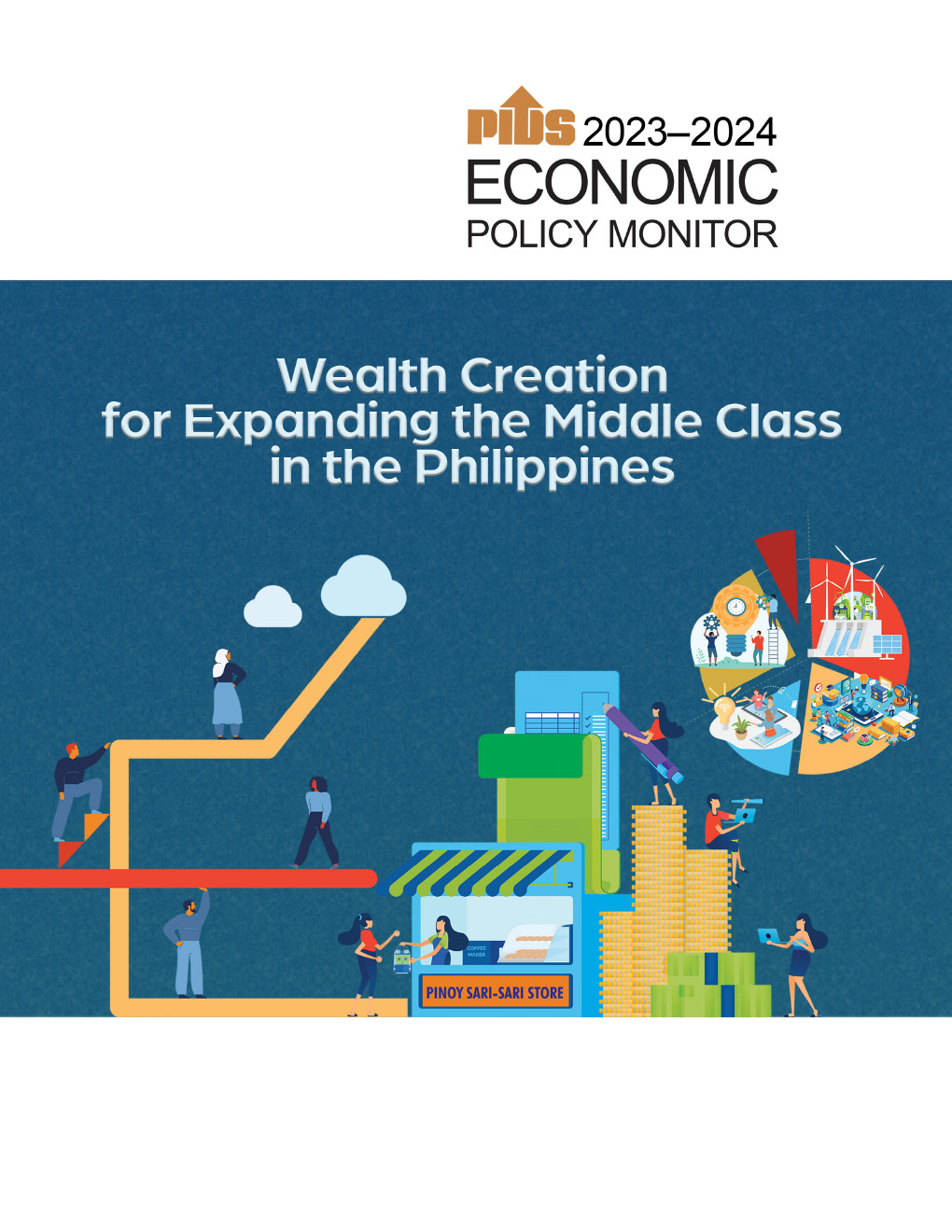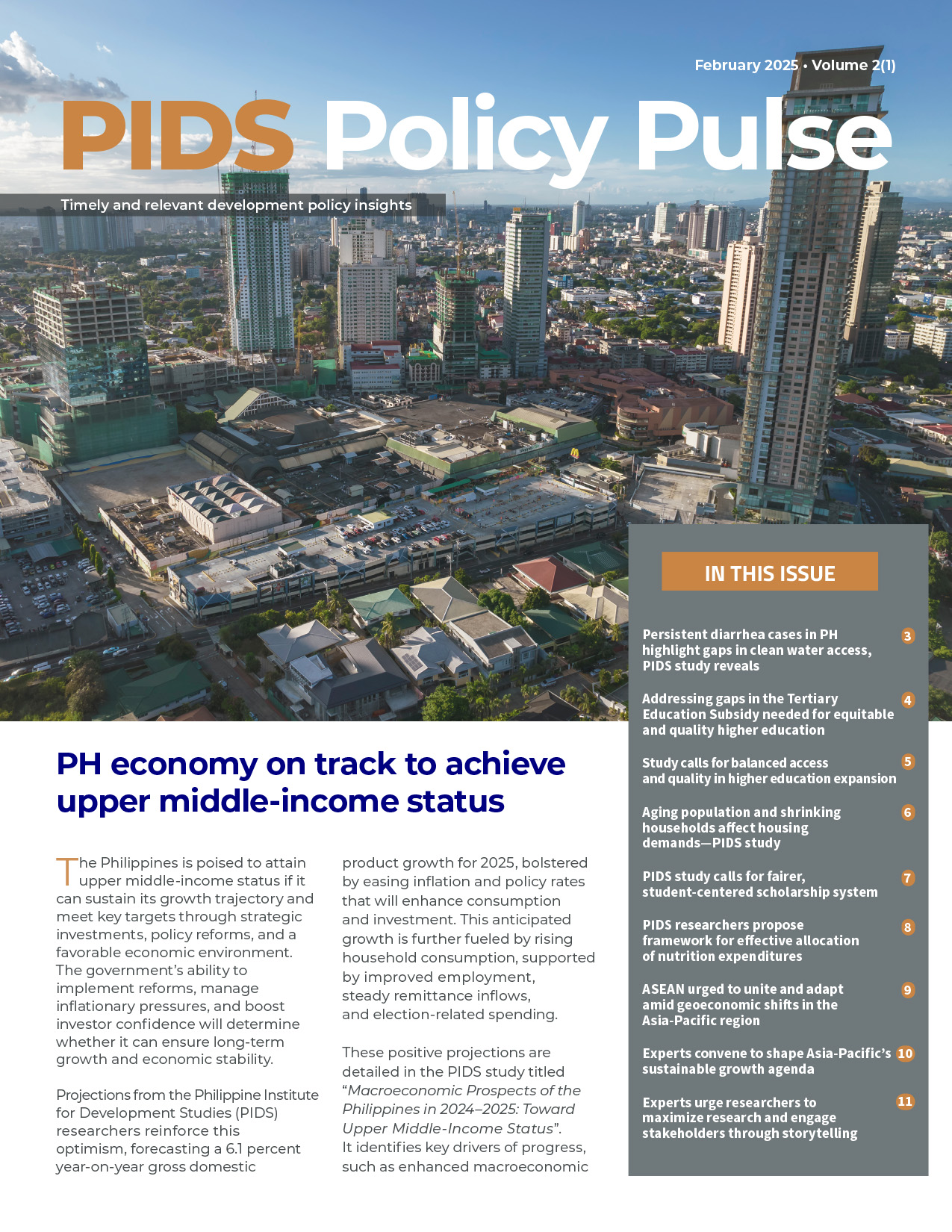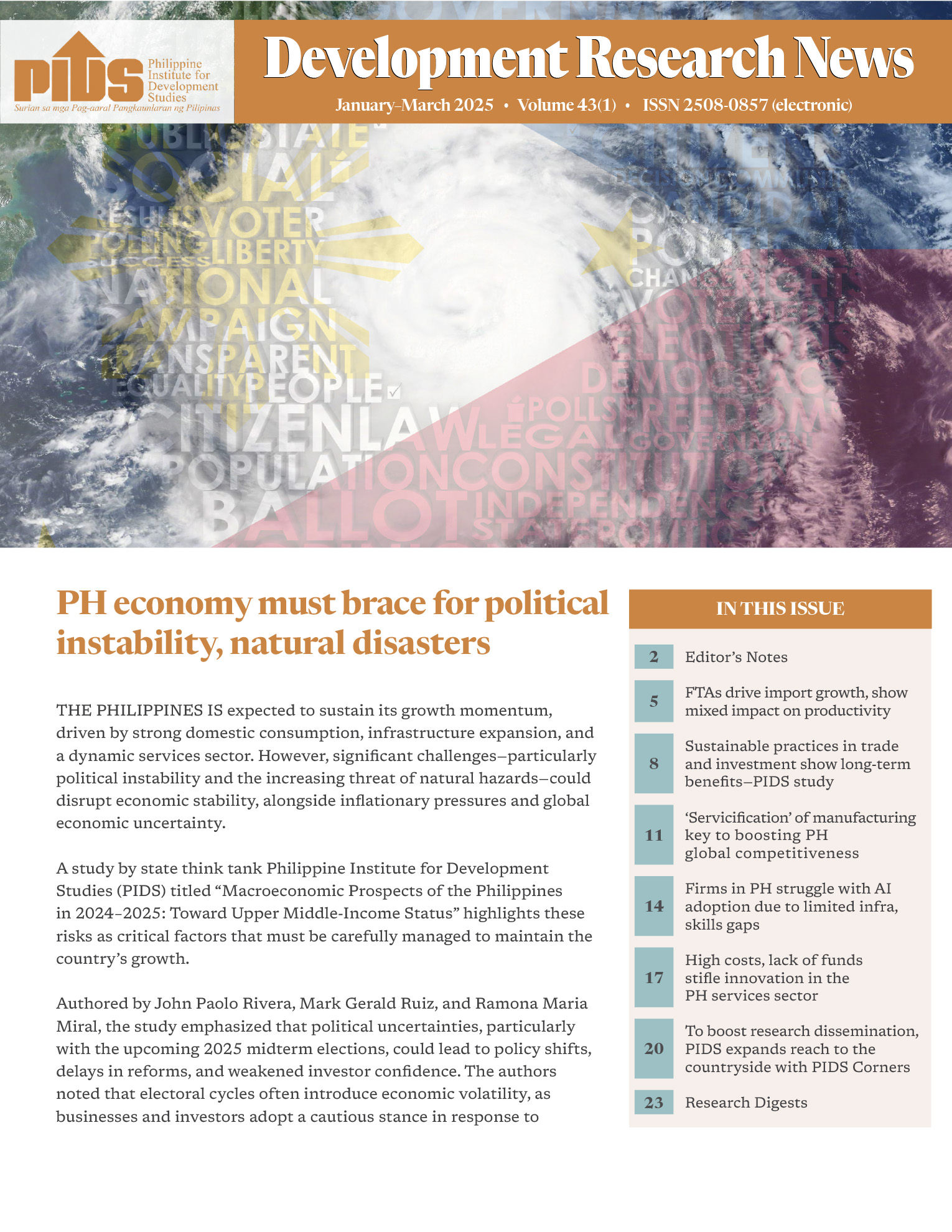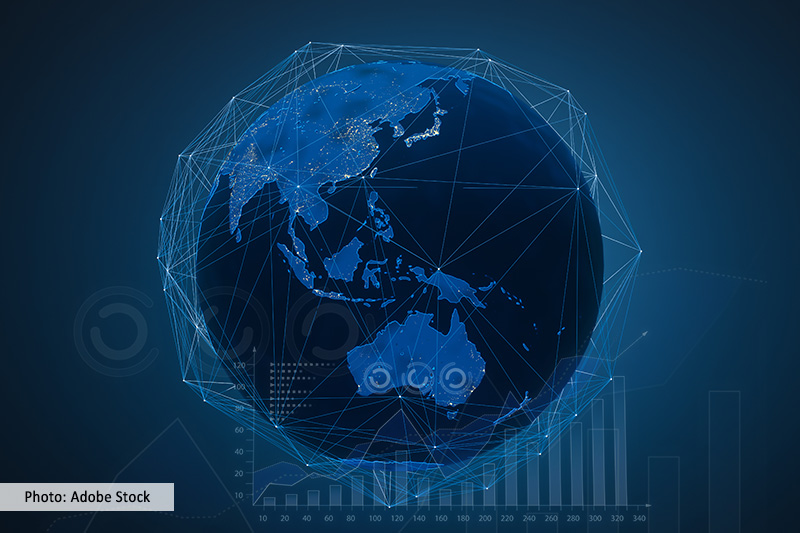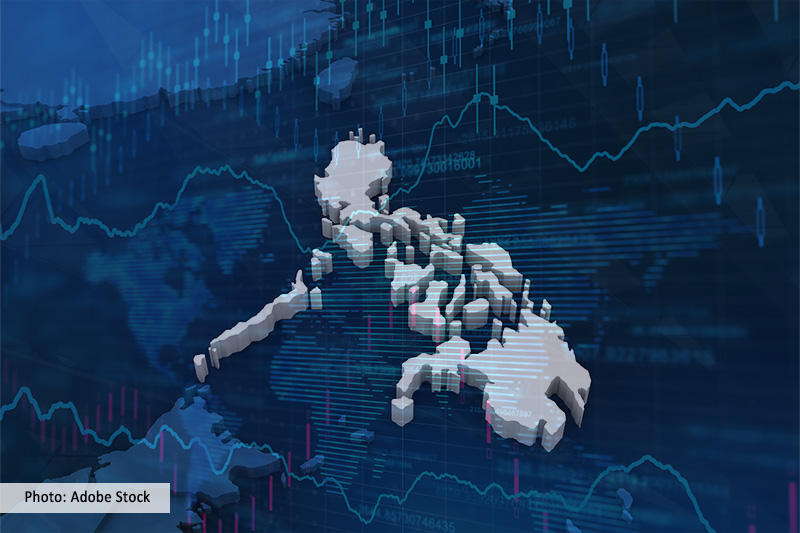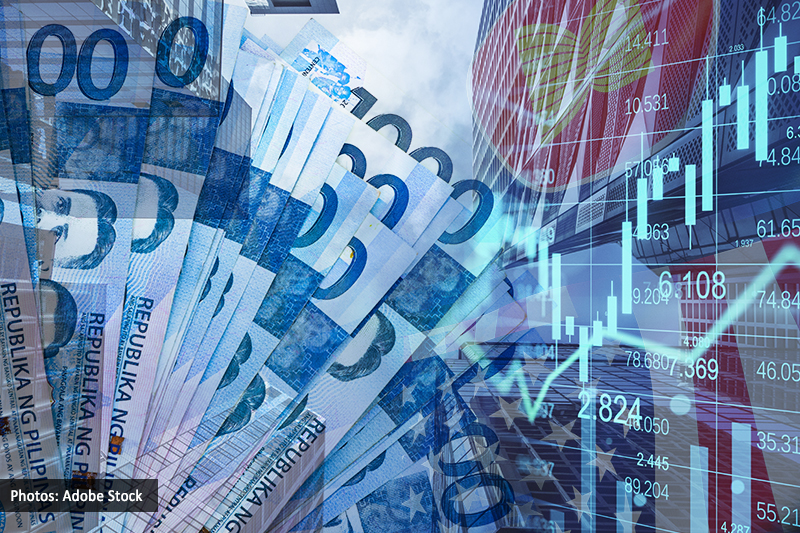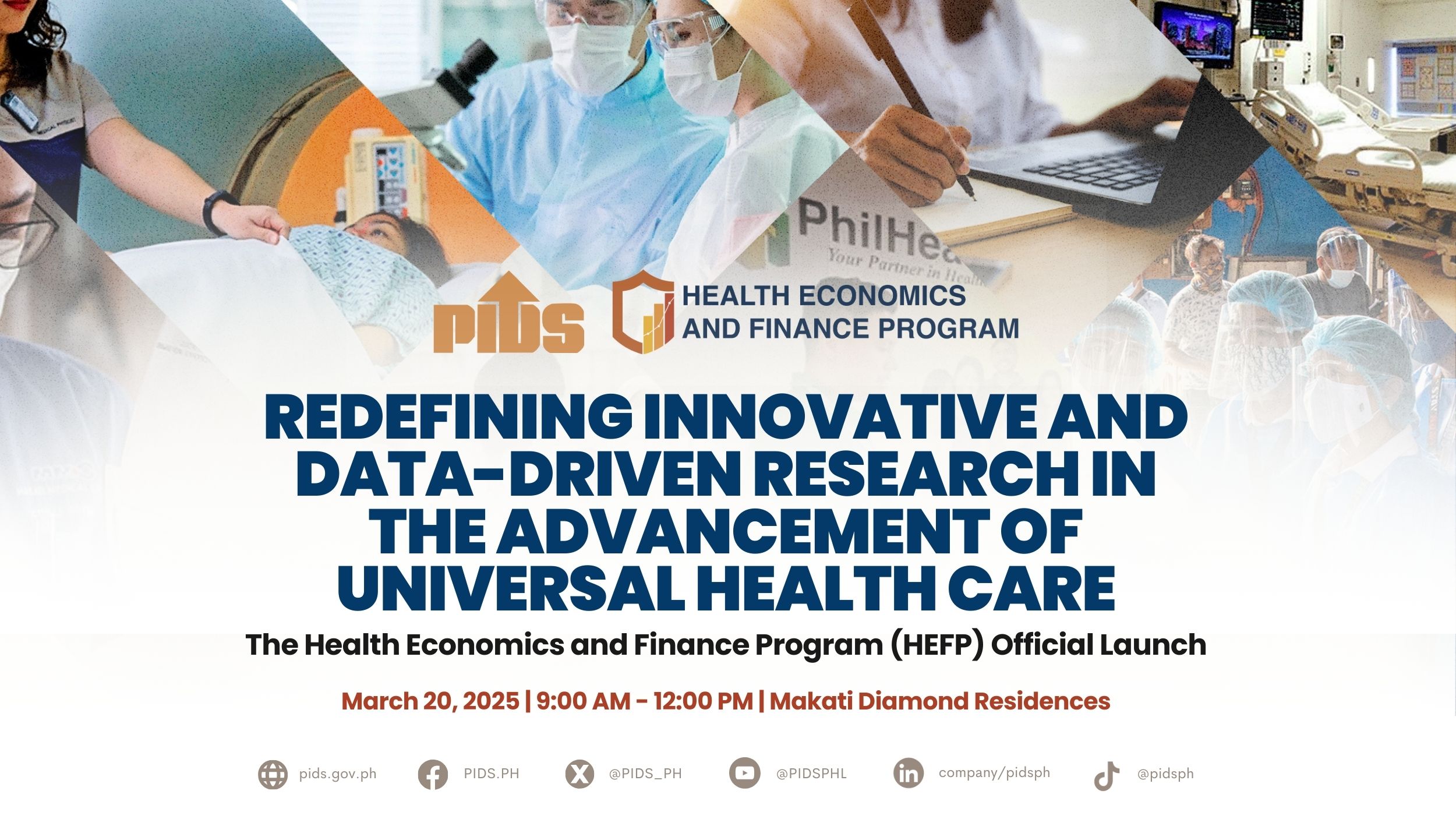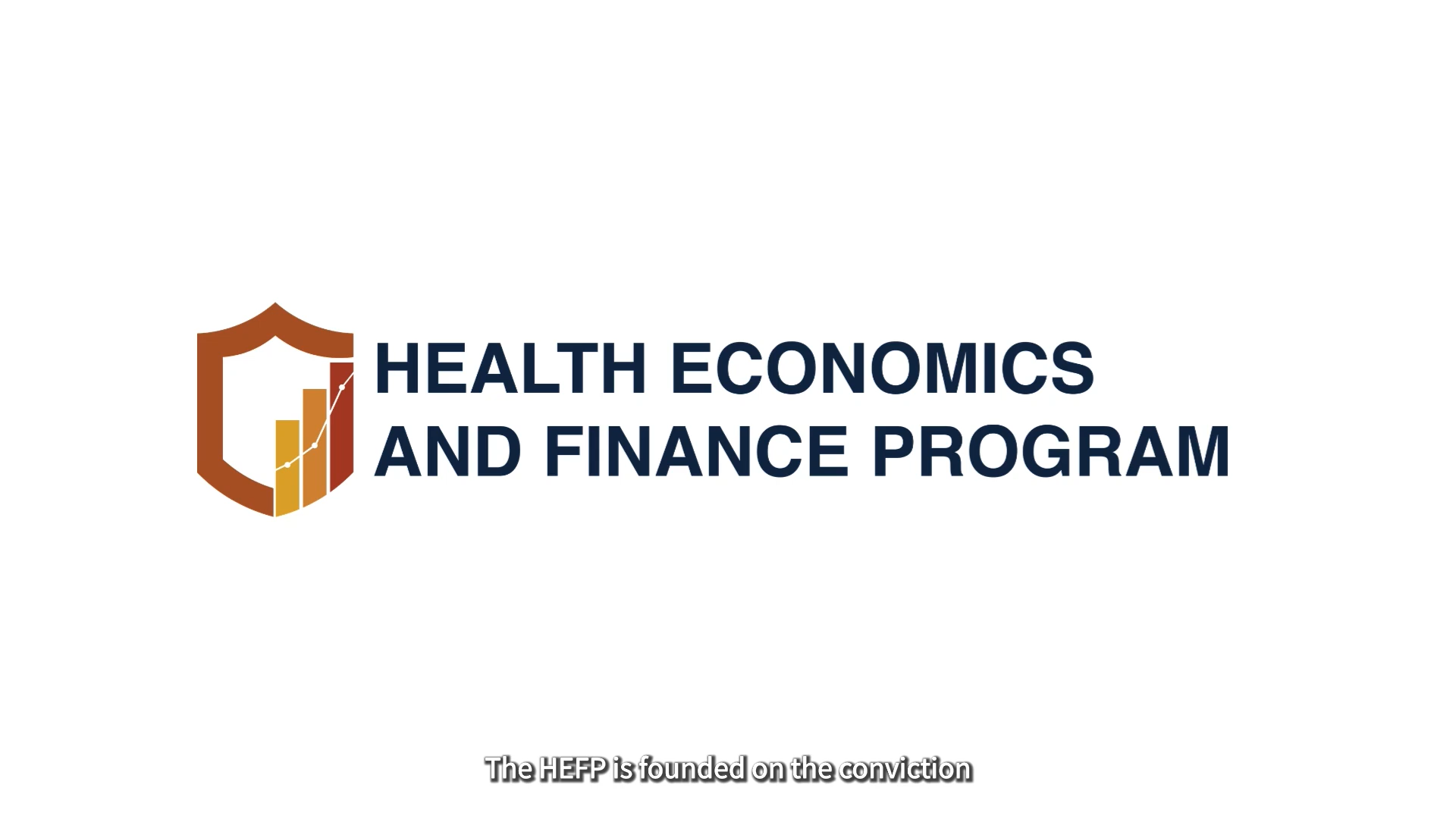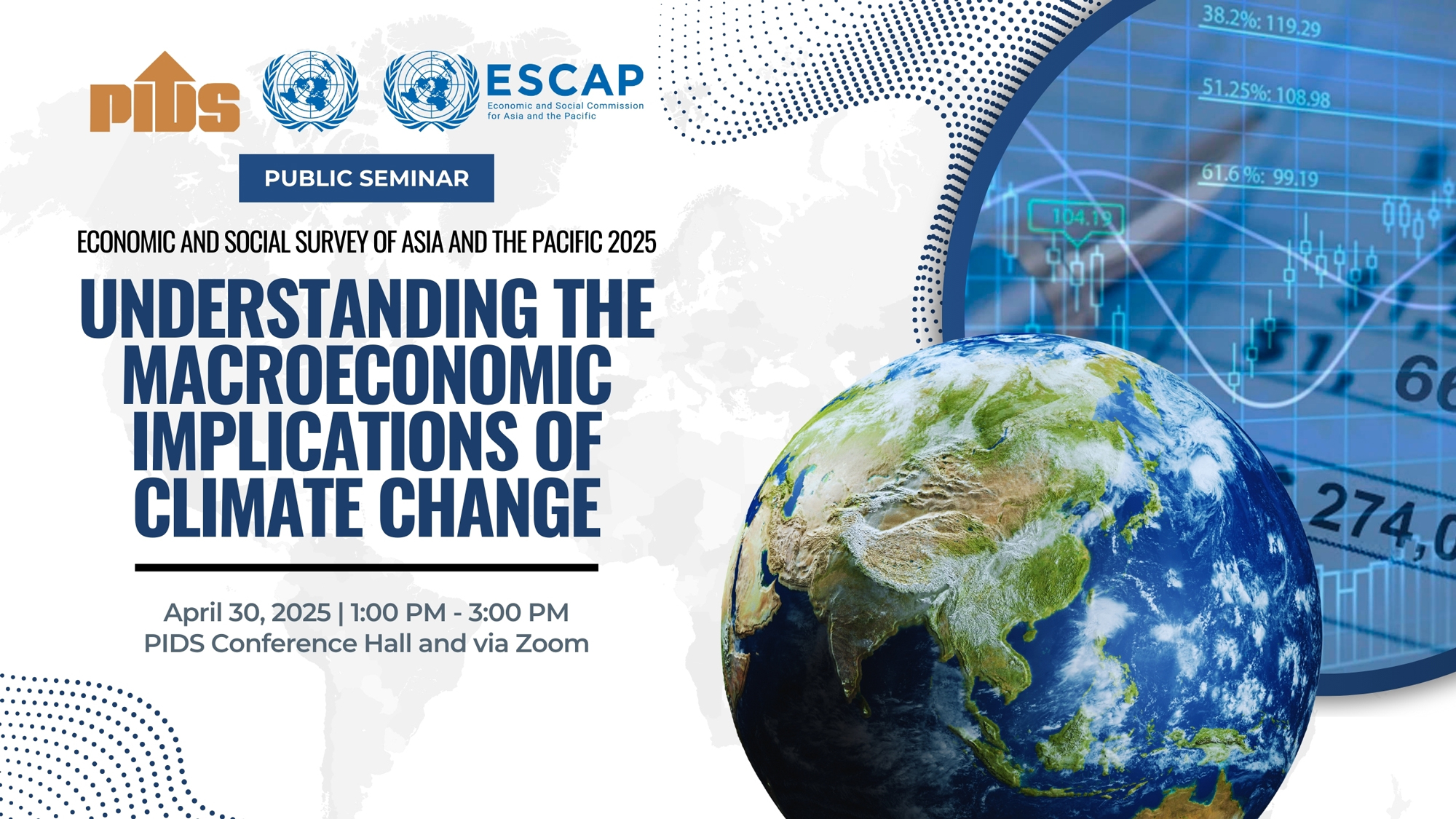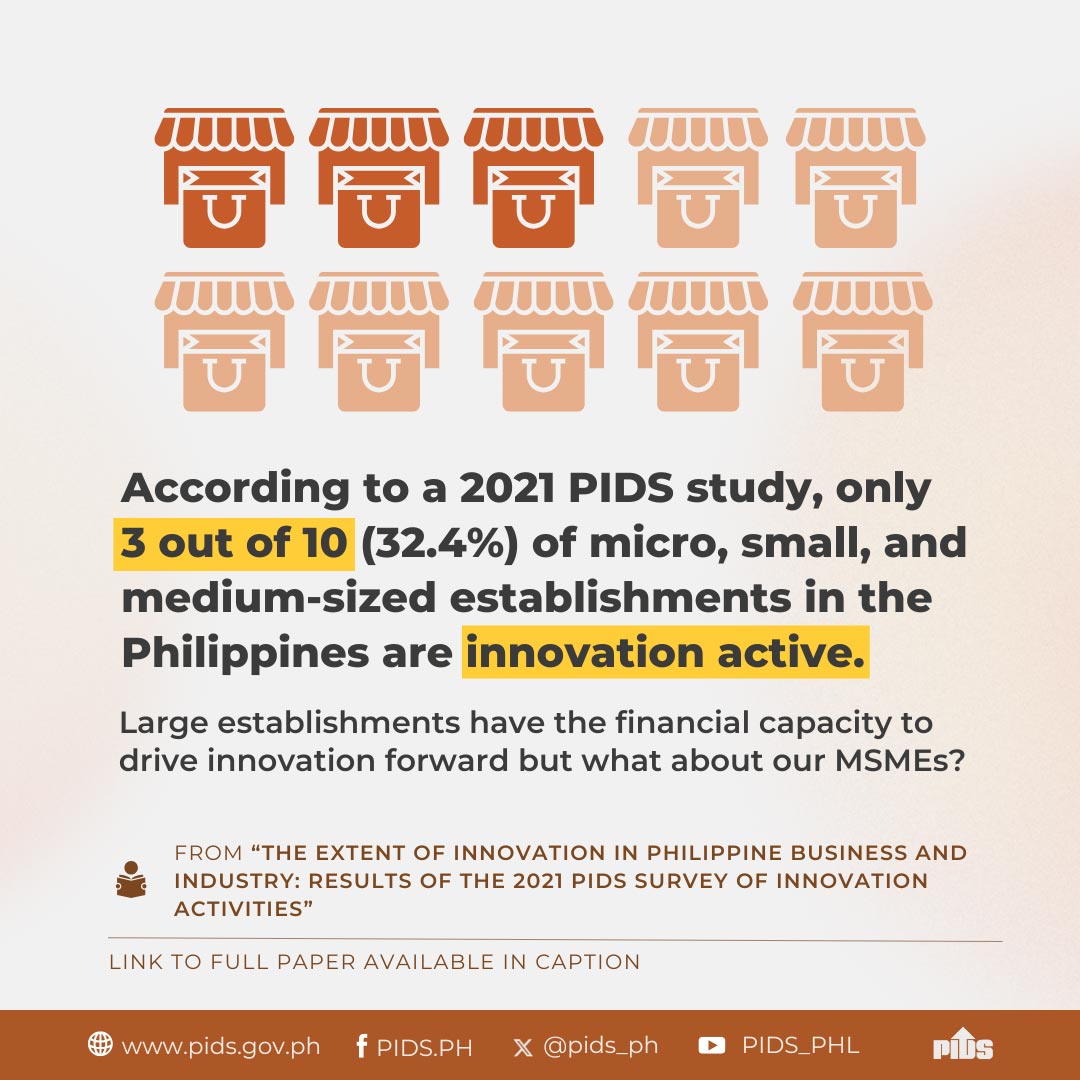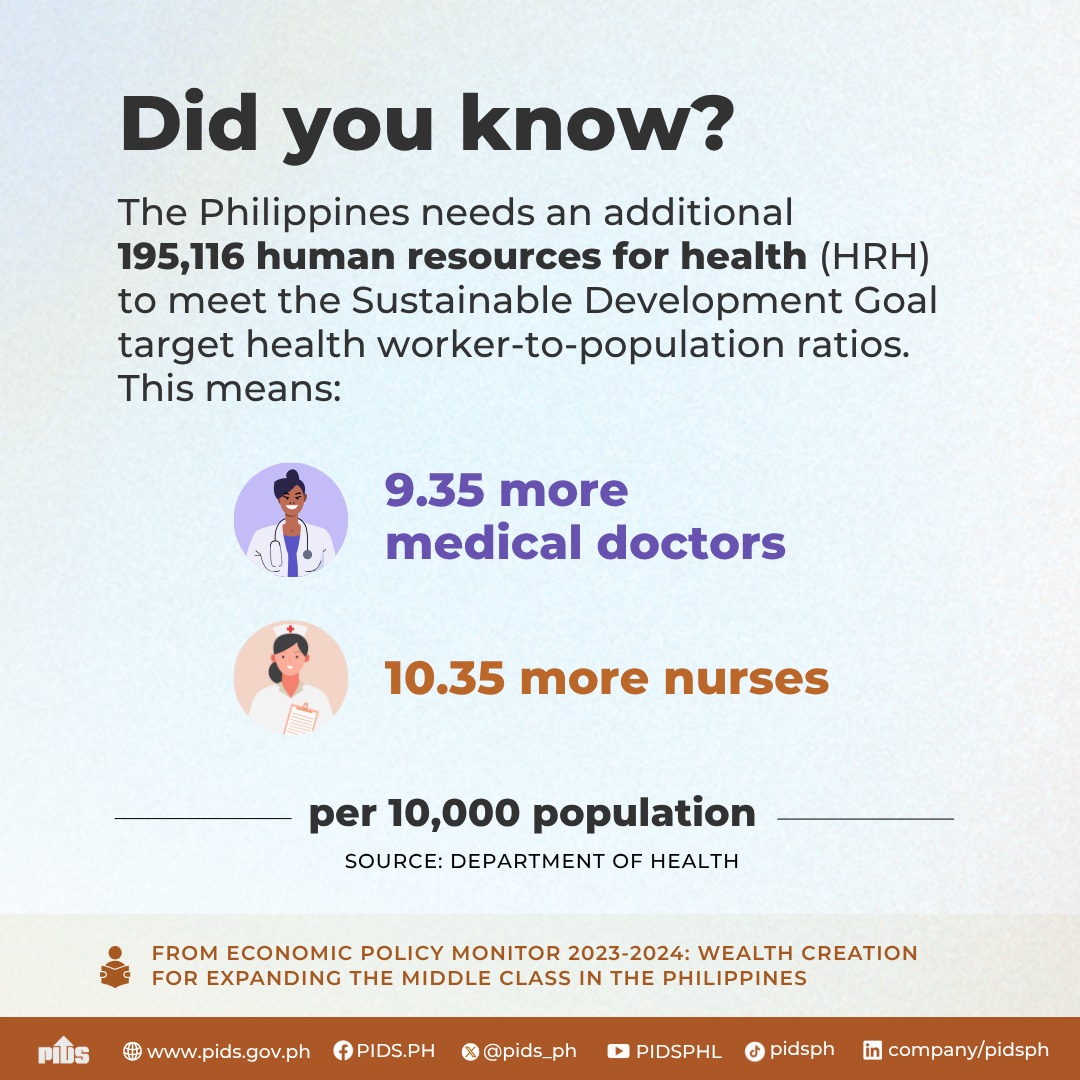The Philippine economy is expected to remain resilient in 2024 and 2025, driven by strong domestic consumption, infrastructure development and a growing services sector.
However, the country will have to manage multiple headwinds effectively, such as inflation, global uncertainties and climate change, if it is to maintain its current growth trajectory, a new report forecasts.
A discussion paper published by the national think tank Philippine Institute for Development Studies (PIDS) said Philippine recovery is on track with the country’s economic growth robust at 5.6 percent in 2023, making the nation among the top growth performers in Southeast Asia.
This growth is anchored on strong domestic demand, overseas remittances, business process outsourcing (BPO), tourism growth, a favorable employment environment, sustained public investments in infrastructure and growing private investments, according to the report “Macroeconomic Prospects of the Philippines in 2024–2025: Toward Upper Middle-Income Status.”
The paper, released last month, said that if this growth trajectory can be sustained, the Philippines will be on track to reach upper middle-income status by 2025 and beyond.
In 2024, the document had estimated a year-on-year gross domestic product or GDP growth of between 5.8 percent and 6.0 percent, with the country on its way to meeting the government target of 6 percent to 7 percent sustained annual GDP growth and once more positioning itself as one of the fastest growing economies in Southeast Asia.
The expansion is driven by continued government spending on infrastructure development but is tempered by the damages from recent natural calamities such as typhoons and drought.
Meanwhile, year-on-year GDP growth for 2025 will likely hit 6.1 percent, anchored on the expectations of easing inflation, policy rates reinforcing consumption and investment, enhanced household consumption, improving employment rates, a steady inflow of overseas remittances and election spending in the first half of 2025.
Infra spending
Government spending on infrastructure development is also seen to continue to fuel growth, together with the recovery of merchandise exports, particularly electronic products, and the resiliency of services exports, especially tourism and BPO.
“Hence, macroeconomic conditions are expected to improve. However, the optimism for growth is impeded by downside risks from the global economy such as geopolitical threats, deteriorating economic conditions of key partners, and the worsening of overall external conditions; as well as domestic headwinds such as unclear fiscal and monetary policies, lack of access to credit, domestic competition, labor problems, threats of natural calamities, volatilities in exchange rate, among others,” said study authors John Paolo Rivera, Mark Gerald Ruiz and Ramona Maria Miral.
Moreover, GDP growth is being hampered by the prevailing high borrowing costs that constrain both household and government consumption.
All these risks pose implications for consumers and enterprises as well.
Consumer sentiment in the Philippines was more pessimistic for the second quarter of 2024 and overall confidence index became more negative due to consumer concerns over the steep increases in the prices of goods and services, lower purchasing power, fewer available jobs, and the effectiveness of government policies and programs on inflation control, traffic and public transportation, provision of financial assistance, and labor and employment.

